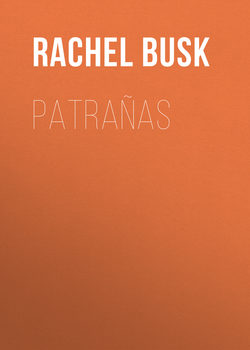Читать книгу Patrañas - Busk Rachel Harriette - Страница 6
THE BLOOD-STAIN OF THE ALCÁZAR OF SEVILLE
ОглавлениеOf all the beautiful things which are to be seen at Seville, there is perhaps none which engrosses the attention as the alcázar – so called because built after the fashion of a Moorish palace. To the traveller unacquainted with the East it affords a practical realization of the famed elaboration of Moorish magnificence. It is not very certain whether in it Pedro the Cruel erected a new foundation, or restored an old one remaining from the time of the Moorish occupation; but he certainly left nothing wanting to make it the worthy habitation of one of the most powerful monarchs of the time9. The present century has not been wanting to the example thus set; and by dint of the artistic care bestowed upon it, its beauties shine now as brilliantly as at the moment of their first completion. The gardens, with their groves of plantains, datunas, tunales, myrtles, box-trees, and oranges, may appear stiff to an English eye; but be there in the summer, and you readily realize the luxury of paths so contrived as to be always in the shade, and which, when this even is too hot, can be cooled down by turning on a flow of icy water over the tiles which pave them.
It is in the interior, however, that the greatest luxuriance of imagination has been displayed. It is all one blaze of dazzling tints, such as, one would think, no one but some of Aladdin’s genii could have produced. The walls are panelled with a delicate embroidery-like fretwork of every gorgeous hue; the roofs cieled with seeming liquid gold, suspended in burnished drops. It is the dazzling image of all one has dreamt of Byzantine or Persian colouring; it is like being in the fairy palace which was all one large prism. It might have been imagined by mad genii, and executed by frantic fairies. It might be the laboratory where tints are prepared for rainbows and tropical sunsets, or where the painting of peacocks and butterflies, humming-birds, and exotic flowers is devised. Or it might be the jewel-storehouse of some thrice-rich monarch, to whom emeralds and rubies are plentiful as figs and peaches, and all in cabinets of wrought gold.
Amid all this splendour there is one sad, dark spot, which has outlived the wear of five centuries, to stand a witness of the judgment of Heaven overtaking the tyrant and the oppressor. Pedro the Cruel was the only Christian monarch who ever indulged himself with such a nest; and I fear the life he led within it was not what that of a Christian monarch ought to be. Not to speak of his other faults, his thirst for blood was so great as to be surpassed only by the atrocities ascribed to Nero. Whoever displeased him in any way was summarily put to death, and that sometimes amid cruel tortures, without form of trial.
An old ballad has lately been found, which arranges in rhyming order the whole catalogue of names and qualities of the distinguished people whose lives were forfeited by his hand, or at his behest, which served the people to perpetuate their detestation of his character. There was Don Garcilaso, and his little brothers Don Juan and Don Diego; the Infante of Aragon, his cousin; Don Fernando, a knight of high renown; the noble youth Don Luis de Albuquerque; and Peralvarez Osorio, who had injured him in nothing. Then the Queen of Aragon, to whom his father was brother; and Doña Blanca, his own wife; Doña Juana and Doña Isabel, high ladies both, of the Asturias; and Gutierrez of Toledo, and the Archbishop his brother; Don Iñigo d’Orozco, who fought him in the field; and Don Suero, the good prelate, Archbishop of Santiago, and also Bermejo de Granada. And besides these many more, both hidalgos and caballeros.
Thus at last his wickedness outgrew the people’s patience; and when the good Henry of Trastamare rose up against him, and provoked him to fight, and slew him, they all hailed the act as the execution of the sentence of Divine Justice, and acclaimed Henry as their deliverer and their ruler in his stead; for Alonso, the son of his unblessed union with Maria Padilla, whom he had forced the people to acknowledge for his successor, had been carried off by sudden death soon after; and though the daughter of his lawful marriage had married our own John of Gaunt, all his reputation, and that of the Black Prince his father, could not outweigh their disinclination for a foreign king.
With regard to the mode of Pedro the Cruel’s death, the more credited account is that his end was an episode of the siege of Montiel, where he had sought to hide himself from the victorious pursuit of Henry de Trastamare. Local tradition loves to think it found him out with poetical justice, and left its stain in the very hall which had been the scene of his wanton excesses; where others had fallen at his command, and whence the decree had gone forth for the relentless execution of his victims.
9
It was completed 1364.
